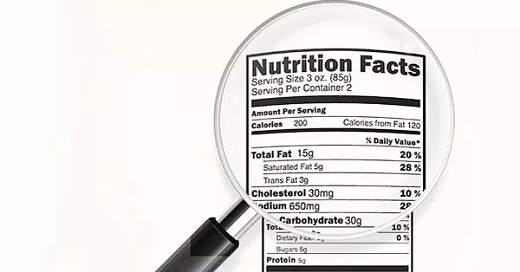How to Read Food Labels Like a Pro: Avoiding Hidden Additives and Chemicals
Understanding food labels is one of the best ways to make informed decisions about what goes into your body. But food labels can be overwhelming, especially when you’re trying to avoid hidden additives, chemicals, and unhealthy ingredients. This guide will help you decode food labels like a pro so you can make smarter, cleaner choices for your health.
1. Understanding Food Label Basics:
Serving Size: Always check the serving size first. It’s easy to overlook this, but it impacts the nutritional breakdown.
Calories: Be mindful of the calorie count, but don’t focus on it alone. Other factors like ingredients and nutritional value matter more.
Ingredients List: Ingredients are listed in order of quantity, from the most to the least. Keep an eye on the first few ingredients—they should be whole foods or recognizable items.
2. Avoiding Additives and Preservatives:
Common Chemical Additives to Watch Out For: Look for preservatives like BHT, BHA, and sodium benzoate, which are used to extend shelf life but have been linked to potential health risks.
Artificial Sweeteners: Be cautious of ingredients like aspartame, sucralose, and high fructose corn syrup (HFCS), which are often hidden in processed foods.
MSG and Its Variants: Monosodium glutamate (MSG) and its disguised versions like autolyzed yeast extract can be added to enhance flavor, but they can also cause reactions in sensitive individuals.
3. Identifying Clean Labels:
Short Ingredients List: The fewer ingredients, the better. A clean food label typically contains ingredients you can pronounce and are familiar with, like vegetables, grains, or spices.
Certified Organic: Choose products with certified organic labels to avoid synthetic pesticides and fertilizers.
Non-GMO Verified: Look for products with the non-GMO label to avoid genetically modified organisms (GMOs) in your food.
4. How to Spot Hidden Sugars:
Watch for Multiple Forms of Sugar: Manufacturers often disguise sugar by listing it under various names. Look out for terms like cane sugar, agave nectar, or fruit juice concentrate.
Limit Added Sugars: Aim for foods with little to no added sugars. Too much can lead to weight gain, inflammation, and blood sugar issues.
5. Decoding "Natural" and "Healthy" Claims:
Natural Isn’t Always Better: Just because a product says “natural” doesn’t mean it’s healthy. Always verify by checking the ingredients list.
“Healthy” Claims Are Marketing: Terms like “low-fat,” “light,” or “heart-healthy” often signal processed foods. Take a closer look at the actual ingredients and nutritional content.
6. The Importance of Nutritional Facts:
Fat, Protein, and Carbs: Focus on the ratios of healthy fats, protein, and carbohydrates. Opt for foods that are nutrient-dense, not just calorie-dense.
Sodium and Fiber: Look for products that are lower in sodium and higher in fiber, which helps with digestion and blood sugar regulation.
7. How to Make Better Choices at the Grocery Store:
Plan Ahead: Go to the store with a plan and stick to your list to avoid impulse buys of processed foods.
Shop the Perimeter: The freshest foods (fruits, vegetables, meats) are usually along the perimeter of the store. Processed and packaged foods are typically in the middle aisles.
Know Your Brands: Familiarize yourself with brands that align with your clean eating goals, and make these your go-to choices.
Conclusion: By understanding how to read food labels and identifying harmful additives, chemicals, and hidden sugars, you can take control of your health and make better food choices. With practice, reading food labels will become second nature, and you’ll feel empowered to make choices that nourish your body and support your wellness goals.



